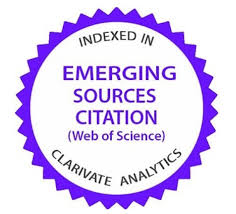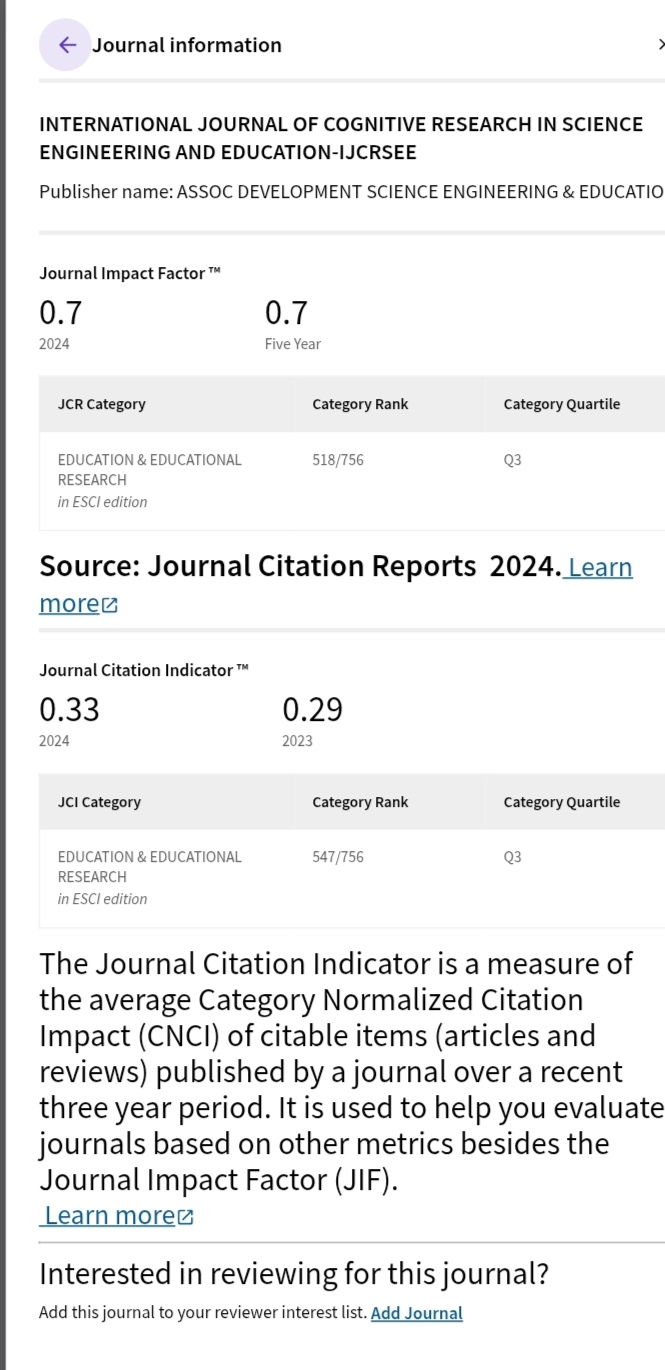A Study of Japanese University Students Influenced by the Covid-19 Pandemic and their Awareness with Their One’s Own Face
DOI:
https://doi.org/10.23947/2334-8496-2022-10-2-17-26Keywords:
Covid-19 pandemic, Changes in awareness of one’s own face, Students, Face filtering, Use of social media, EducationAbstract
In 2019, an outbreak of novel coronavirus infection (hereafter referred to as Covid-19) occurred, and on January 16, 2020, the first case of an infected person was confirmed in Japan. Now that more than two years have passed, the world is gradually returning to normal. However, the increased use of Social Networking Services (SNS) and web conferencing tools has caused young people, who are accustomed to seeing filtered faces, to become dissatisfied and uncomfortable with their own real faces. This has resulted in an increased number of young people who have become dissatisfied and mentally stressed with their facial features and expressions. Therefore, the author conducted a study on young people aged 18–20 years old in 2022 regarding this issue. The author evaluated the changes in awareness one’s own face between the Covid-19 pandemic and the present among students attending Japanese universities, despite being affected by Covid-19 in the latter half of their high school or college years. The results indicated that 49.2% of the respondents revealed that their awareness their own faces had changed during the Covid-19 pandemic. Based on these findings, it is necessary for educators and parents to take considerable actions, so that young people do not become obsessed with the quality of their facial features and feel unduly stressed. Furthermore, young people should not be ashamed of their real, unfiltered faces.
Downloads
References
Adachi, Y., & Muto, C. (2018). Subjective well-being and Instagram use among undergraduates. Bulletin of Tokai Gakuin University, 12, 117-122. https://doi.org/10.24478/00003637
Akaiwa, Y., Hayashi, F., Sakaguchi, K., & Takemi, Y. (2022). Changes in dietary behaviors and food-related accessibility issues and information needs during the COVID-19 pandemic: comparison based on household economic status. Japanese Journal of Public Health, 69(1), 3-16. https://doi.org/10.11236/jph.21-057
Baudouin, J. Y., & Tiberghien, G. (2004). Symmetry, averageness, and feature size in the facial attractiveness of women. Acta Psychologica, 117(3), 313-332. https://doi.org/10.1016/j.actpsy.2004.07.002 DOI: https://doi.org/10.1016/j.actpsy.2004.07.002
Castro-V, G. (2012). The ‘beauty’ of male circumcision in Japan: gender,sexuality and the male body in a medical practice. Sociology, 47(4), 687-704. https://doi.org/10.1177/0038038512453794 DOI: https://doi.org/10.1177/0038038512453794
Chiba Prefecture. (2022). New lifestyle. Retrieved June 20, 2022, from https://www.pref.chiba.lg.jp/kenfuku/kansenshou/ncov/documents/000641743.pdf
Cristel, R. T., Demesh, D., & Dayan, S. H. (2020). Video conferencing impact on facial appearance: Looking beyond the COVID-19 pandemic. Facial Plastic Surgery and Aesthetic Medicine, 22(4), 238-239. https://doi.org/10.1089/fpsam.2020.0279 DOI: https://doi.org/10.1089/fpsam.2020.0279
Hashimoto, S., Miyaoka, Y., Suzuki, M., & Kamo, T. (2018). Study on the relationship among social networking service, eating behavior. Journal of Atomi University, Faculty of Literature, 53, 265-276. Retrieved Aug. 11, 2022, from https://core.ac.uk/download/pdf/229242466.pdf
Hashimoto, Y. (2020). People’s anxiety, stress and depression in corona related crisis. The Journal of the Institute of Electronics, Information and Communication Engineers, 38(1), 25-29. https://doi.org/10.11430/jsicr.38.1_25
Kawano, S., Tokusako, S., Sawabe, Y., & Hibino, E. (2021). Modern people’s awareness of men’s makeup and its social background. Research Bulletin of Osaka Shoin Women’s University, 11, 23-34. Retrieved June 20, 2022 from http://id.nii.ac.jp/1072/00004448/
Mizokami, S. (2009). Student learning and development from a college life perspective: well-balanced curricular and extracurricular activities show high development. Kyoto University Research Information Repository (KURENAI), 15, 107-118. Retrieved June 20, 2022, from http://hdl.handle.net/2433/97909
Okajima, I., Akitomi, J., Murakami, H., Tanizawa, N., & Kajiyama, I. (2021). Sleep changes during COVID-19: a study with sleep recording app users. Japanese Journal of Behavioral and Cognitive Therapies, 47(2), 83-92. https://doi.org/10.24468/jjbct.20-025
Olson, I. R., & Marshuetz, C. (2005). Facial attractiveness Is appraised in a glance. Emotion, 5(4), 498–502. https://doi.org/10.1037/1528-3542.5.4.498 DOI: https://doi.org/10.1037/1528-3542.5.4.498
Rajkumar, R. P. (2020). COVID-19 and mental health: a review of the existing literature. Asian Journal of Psychiatry, 52(2020), e102066. https://doi.org/10.1016/j.ajp.2020.102066 DOI: https://doi.org/10.1016/j.ajp.2020.102066
Rice, S. M., Graber, E., & Kourosh, A. S. (2020). A pandemic of dysmorphia: “Zooming” into the perception of our appearance. Facial Plastic Surgery & Aesthetic Medicine, 22(6), 401–402. https://doi.org/10.1089/fpsam.2020.0454 DOI: https://doi.org/10.1089/fpsam.2020.0454
Saladin, R. (2015). Between gyaru-o and sōshokukei danshi: body discoursesin lifestyle magazines for young Japanese men. Contemporary Japan, 27, 53-70. https://doi.org/10.1515/cj-2015-0004 DOI: https://doi.org/10.1515/cj-2015-0004
Sato, H. (2021). The effect of embellishing facial selfies on self-esteem and positive mood. The Japanese Journal of Personality, 30(3), 127-129. https://doi.org/10.2132/personality.30.3.1 DOI: https://doi.org/10.2132/personality.30.3.1
Shauna, M. R., Julia, A. S., Tiffany, L., Emmy, G., & Arianne, S. K. (2021). Zooming into cosmetic procedures during the COVID-19 pandemic: the provider’s perspective. International Journal of Women’s Dermatology, 7(2021), 213-216. https://doi.org/10.1016/j.ijwd.2021.01.012 DOI: https://doi.org/10.1016/j.ijwd.2021.01.012
Silence, C., Rice, S., Pollock, S., Lubov, J., Oyesiku, L., Ganeshram, S., Mendez, A., Feeney F., & Kourosh, A. (2021). Life after lockdown: zooming out on perceptions in the post-videoconferencing era. International Journal of Women’s Dermatology, 7(20), 774-779. https://doi.org/10.1016/j.ijwd.2021.08.009 DOI: https://doi.org/10.1016/j.ijwd.2021.08.009
Sun, W. (2021). Changes of purchasing behavior of supermarket in the background of Covid-19: empirical analysis of local supermarkets in China. Senshu Business Review, 16(1), 55-63. https://doi.org/10.34360/00011766
Suzuki, T., & Yazawa, M. (2021). The psychological influence of cosmetic behavior changes due to wearing masks during the COVID-19 pandemic. Appearance and Adornment Psychological Studies, 1, 5-12. https://doi.org/10.57331/aaps.1.1_5
Swami, V., Hornec, G., & Furnham, A. (2021). COVID-19-related stress and anxiety are associated with negative body image in adults from the United Kingdom. Personality and Individual Differences. Advance Online Publication. https://doi.org/10.1016/j.paid.2020.110426 DOI: https://doi.org/10.1016/j.paid.2020.110426
Tanaka, K. (2021). Practice and running issues of online classes in university. The Annual Bulletin of the Teacher-Training Course at Doshisha University, 10, 48-62. http://doi.org/10.14988/00028272
The Aesthetic Society. (2020). Aesthetic plastic surgery national datebank statistics 2020. Retrieved June 20, 2022, from https://cdn.theaestheticsociety.org/media/statistics/aestheticplasticsurgerynationaldatabank-2020stats.pdf
The Nikkei Electronic Edition. (2022). Kanmboyokan [okugai de masuku fuyo] jubun na kyori toreru zentei de. [Chief Cabinet Secretary: “No need for masks outdoors”, assuming you can get far enough away]. Retrieved June 20, 2022, from https://www.nikkei.com/article/DGXZQOUA115HG0R10C22A5000000/
Torales, J., O’Higgins, M., Castaldelli-Maia, J. M., & Ventriglio, A. (2020). The outbreak of COVID-19 coronavirus and its impact on global mental health. International Journal of Social Psychiatry, 66(4), 317-320. https://doi.org/10.1177/0020764020915212 DOI: https://doi.org/10.1177/0020764020915212
Toriumi, F., Sakaki, T., & Yoshida, M. (2020). Social emotions under the spread of COVID-19 using social media. Transactions of the Japanese Society for Artificial Intelligence: AI, 35(4), F-K45_1-7. https://doi.org/10.1527/tjsai.F-K45 DOI: https://doi.org/10.1527/tjsai.F-K45
Třebický, V., Fialová, J., Kleisner, K., & Havlíček, J. (2016). Focal length affects depicted shape and perception of facial images. PLoS One, 11(2), e0149313. https://doi.org/10.1371/journal.pone.0149313 DOI: https://doi.org/10.1371/journal.pone.0149313
Yazawa, M., & Suzuki, T. (2022). A new appearance problem in with/after corona era—focusing on the appearance concerns of online video calling. Appearance and Adornment Psychological Studies, 1(1), 51-58. https://doi.org/10.57331/aaps.1.1_51
Yomoda, K. (2020). Concerns and stress caused by the novel coronavirus disease (COVID-19) pandemic: a quantitative text analysis of Twitter data. Japan Journal of Physical Education, Health and Sport Sciences, 65(0), 757-774. https://doi.org/10.5432/jjpehss.20048 DOI: https://doi.org/10.5432/jjpehss.20048
Zhou, P., Yang, X. L., Wang, X. G., Hu, B., Zhang, L., Zhang, W., Si, H. R., Zhu, Y., Li, B., Huang, C. L., Chen, H. D., & Deng, F. L. (2020). A pneumonia outbreak associated with a new coronavirus of probable bat origin. Nature, 579, 270-273. https://doi.org/10.1038/s41586-020-2012-7 DOI: https://doi.org/10.1038/s41586-020-2012-7
Published
How to Cite
Issue
Section
Categories
License
Copyright (c) 2022 Nozomi Komiya

This work is licensed under a Creative Commons Attribution 4.0 International License.
Plaudit
Accepted 2022-08-20
Published 2022-08-31











